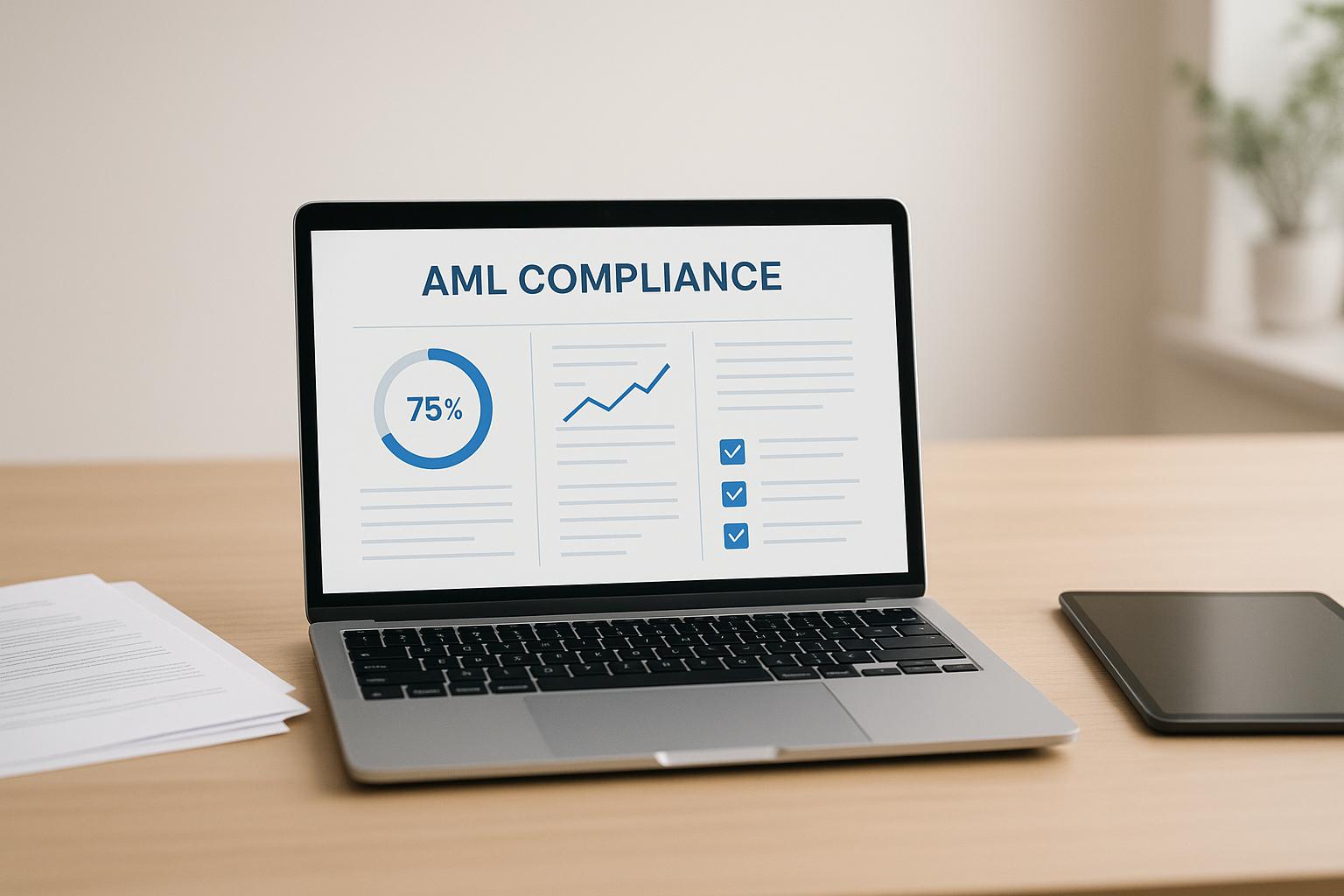Digital piracy costs industries billions every year, with global losses exceeding $240 billion annually. Advanced content matching algorithms help fight piracy by identifying and removing illegal content using tools like digital fingerprinting, AI detection, and blockchain verification. These technologies protect movies, music, software, and even sensitive data in industries like healthcare and finance.
Key Takeaways:
- Digital Fingerprinting: Tracks content even after modifications.
- AI Detection: Monitors platforms and adapts to piracy tactics.
- Blockchain Verification: Ensures secure ownership records.
- Takedown Systems: Automate content removal with up to 96% success rates.
These methods are critical as piracy evolves, with over 215 billion visits to piracy sites recorded in 2022. Solutions like ScoreDetect and automated crawlers continue to improve detection and enforcement, helping industries save billions annually.
Simplify Brand Protection with Digital e-fingerprints
Content Matching Algorithm Basics
Content matching algorithms form the backbone of modern anti-piracy efforts, leveraging advanced technology to identify and monitor the distribution of unauthorized digital content. Below, we’ll explore the key methods, challenges, and advancements shaping effective content matching.
Digital Content Fingerprinting
Digital fingerprinting involves creating unique identifiers, or "fingerprints", for digital content. These fingerprints are essential for detecting unauthorized use, even when the content is altered. By analyzing specific visual markers, fingerprinting generates distinct signatures that help track content across the web [3].
"If a unique digital code identifies copied content even after modifications, detection becomes possible."
– Dr. Alex Bronstein, Tel Aviv University [5]
The fingerprinting process relies on three main steps:
| Component | Function |
|---|---|
| Content Analysis | Examines the characteristics of media to generate identification markers. |
| Fingerprint Extraction | Creates digital signatures that enable quick and precise matching. |
| Database Matching | Compares extracted fingerprints with verified content to identify copies. |
AI-Powered Content Matching
Artificial intelligence plays a crucial role in modern content matching. AI systems can process vast amounts of data to detect copyright violations with remarkable accuracy [2]. These systems are built to monitor platforms in real time, adapt through machine learning, and analyze millions of content pieces to identify infringements.
"AI driven matching algorithms enable the accurate tracking of piracy activity across global piracy sites, despite a constantly evolving digital landscape."
– MUSO [6]
Common Detection Obstacles
While technology has made significant strides, content matching still faces several hurdles:
- Processing and Scale: Handling massive volumes of diverse data is a challenge. Systems must strike a balance between being sensitive enough to catch infringements and avoiding false positives, all while adhering to privacy regulations [3].
- Evasion Tactics: Pirates often modify content – through cropping, reformatting, or altering metadata – to evade detection. This requires ongoing refinement of detection methods [1].
Despite these obstacles, video fingerprinting has proven highly effective. Even when content undergoes major alterations, fingerprinting can still detect unauthorized use, making it a powerful tool in the fight against piracy [3]. These ongoing challenges fuel the development of more advanced anti-piracy technologies.
Industry Uses of Content Matching
Content matching technology plays a critical role in protecting digital assets across various industries. Research shows that digital piracy costs the U.S. economy about $71 billion every year [7].
Media Protection Methods
Streaming platforms and content creators rely on advanced algorithms to monitor and prevent unauthorized distribution of their work. Here’s how content matching is applied in media protection:
| Protection Layer | Implementation | Effectiveness |
|---|---|---|
| Audio Fingerprinting | Identifies content using unique sound patterns | Achieves 98% accuracy in matching film audio [7] |
| Visual Recognition | Detects modified or reposted video content | Tracks content across multiple platforms |
| Real-time Monitoring | Scans streaming services and social media | Provides continuous oversight of online content |
These tools create a strong defense system, ensuring digital assets remain secure and accessible only to authorized users.
Digital Asset Security
Beyond media, industries like finance, healthcare, and legal services also use content matching to protect sensitive information. The same fingerprinting and AI-driven technologies that safeguard movies and music help secure financial records, medical data, and confidential legal documents.
Anti-Piracy Results
Content matching algorithms have shown impressive results in combating piracy. For example, during a Latin American soccer league’s Series A match, anti-piracy measures flagged 4,595 unauthorized streams – 95% of which were traced to social media. The system successfully eliminated 4,400 of these infractions in real time, achieving a 96% success rate [8].
Tools like ScoreDetect enhance these efforts with automated delisting and AI-powered web scraping, boasting a 96% takedown rate and a 95% detection rate. These technologies are crucial, especially as nearly 40% of internet users globally engage in some form of digital piracy each year [2]. With advancements in AI and blockchain, content matching solutions are continually improving to counter increasingly sophisticated piracy tactics.
sbb-itb-738ac1e
Content Matching Tool Components
Building on the foundation of algorithms, let’s dive into the essential components that power today’s anti-piracy tools. These systems are critical in combating digital piracy, which impacts the global economy with losses exceeding $1 trillion annually [2].
Content Discovery Systems
At the heart of content discovery are sophisticated web scanners. These AI-driven crawlers continuously monitor websites and peer-to-peer networks, achieving detection rates that are up to 34% higher than traditional automated systems [9]. For instance, MUSO’s scanning infrastructure processes a staggering 6 million illegal content pages daily, covering everything from blogs to torrent indexes and message boards [9].
Some of the key technologies in this phase include:
| Technology Component | Function | Detection Rate |
|---|---|---|
| AI-Powered Crawlers | Automated scanning of websites and P2P networks | 34% higher than standard automation [9] |
| Machine Learning Analysis | Pattern recognition and content matching | – |
| Real-time Monitoring | Continuous surveillance of piracy sources | 66% more effective than manual searches [9] |
This discovery stage works hand-in-hand with blockchain verification and takedown procedures, forming a seamless anti-piracy ecosystem.
Blockchain Copyright Tools
Blockchain technology has transformed copyright protection by offering a tamper-proof way to verify content ownership. Thanks to its decentralized structure, data integrity is preserved through distributed storage across multiple nodes [10].
"The proposed copyright protection scheme can allow various stakeholders to better fulfill their roles, in addition to enhancing the overall maintainability and scalability of the blockchain system." – ScienceDirect [11]
Platforms like Binded and Ascribe bring copyright registration into the digital age, while smart contracts, such as those used by Ujo Music, simplify licensing. By integrating blockchain into digital content reserves, these tools bolster defenses against piracy and ensure ownership verification across the board.
Takedown Notice Systems
Automated takedown systems are the final safeguard in the fight against digital piracy. These systems prioritize both speed and accuracy while adhering to DMCA regulations. A standout example is YouTube’s Content ID system, responsible for 83.4% of all content removal actions, compared to just 16.7% handled through traditional takedown methods [4].
For effective takedowns, precise documentation and swift action are crucial. Companies should incorporate DMCA compliance into their broader brand protection strategies. Leveraging monitoring tools alongside legal counsel ensures violations are addressed quickly and thoroughly [12]. This step completes the anti-piracy cycle by efficiently removing unauthorized content.
Conclusion
Summary Points
As discussed earlier, content matching algorithms – ranging from digital fingerprinting to blockchain verification – play a vital role in combating piracy. Online video piracy alone is a massive issue, costing the global media industry $75 billion annually, with projections suggesting this figure could skyrocket to $125 billion by 2028. Modern anti-piracy solutions now combine multiple technologies to build stronger defenses against unauthorized content distribution [13].
One standout example is ScoreDetect, which merges invisible watermarking with intelligent web scraping. This approach has significantly boosted success rates across the industry. Key technological advancements include:
| Technology | Impact | Success Rate |
|---|---|---|
| Blockchain Verification | Provides tamper-proof ownership | Over 40% annual growth in adoption [14] |
| Automated Takedowns | Enables swift violation responses | 96% success rate |
These innovations are paving the way for even more advanced anti-piracy tools.
Anti-Piracy Technology Trends
The anti-piracy landscape continues to evolve, with the market forecasted to grow from $236.2 billion in 2025 to $754.9 billion by 2035, reflecting a compound annual growth rate (CAGR) of 12.3% [15]. AI and blockchain technologies are reshaping how content protection is approached. For example, in December 2024, Japan’s Cultural Affairs Agency launched a ¥300 million ($2 million) pilot project to develop AI systems designed to detect pirated manga and anime content [15].
Some of the key trends driving advancements in content matching include:
- AI-enhanced detection tools that adapt to evolving piracy tactics
- Blockchain-based rights management for greater transparency and security
- Automated takedown systems delivering increasingly higher success rates
In 2022 alone, more than 215 billion visits to piracy websites were recorded [6][16]. To combat this, advanced algorithms now analyze over 36 billion web pages and have facilitated over 125 million Google delistings [6][16]. These figures highlight the growing impact of digital anti-piracy efforts and the potential for continued progress in this space.
FAQs
How do content matching algorithms stay effective against piracy tactics that involve altering content?
Content matching algorithms rely on machine learning and sophisticated detection methods to keep up with the ever-changing strategies of piracy. By processing vast amounts of data, these systems can spot patterns in legitimate content, making it possible to detect even minor tweaks pirates make, such as altering the format, structure, or quality.
Today’s algorithms also use techniques like dynamic content matching and video fingerprinting to identify manipulated content with greater precision. These technologies are constantly evolving, improving their ability to flag and address even heavily modified pirated material.
How does blockchain technology help verify content ownership and fight digital piracy?
Blockchain technology plays a key role in verifying content ownership by establishing a secure and unalterable record of who owns and controls distribution rights. This gives creators the ability to prove their authorship and monitor the use of their work, significantly lowering the risk of unauthorized use or false claims.
When it comes to fighting piracy, blockchain offers robust tools such as unique digital fingerprints that prevent duplication and forensic watermarking to track misuse. By delivering a transparent and tamper-proof way to confirm ownership, blockchain empowers creators to act quickly against piracy, protecting both their rights and their income.
What challenges do content matching algorithms face in detecting piracy while respecting privacy laws?
Content matching algorithms have a tough job: they need to spot piracy accurately while staying within the bounds of strict privacy laws. One of the biggest hurdles is their reliance on large datasets to work effectively. This reliance can spark serious concerns about user privacy and the potential misuse of personal data. On top of that, there’s the issue of false positives – cases where legitimate content gets wrongly flagged as pirated. These mistakes can lead to even more headaches.
Privacy regulations like the GDPR add another layer of complexity. These laws strictly limit how data can be collected and used, making it risky for companies to roll out these technologies without potentially running afoul of legal requirements. Striking the right balance between cracking down on piracy and safeguarding user privacy is a constant and challenging task for content protection systems.

